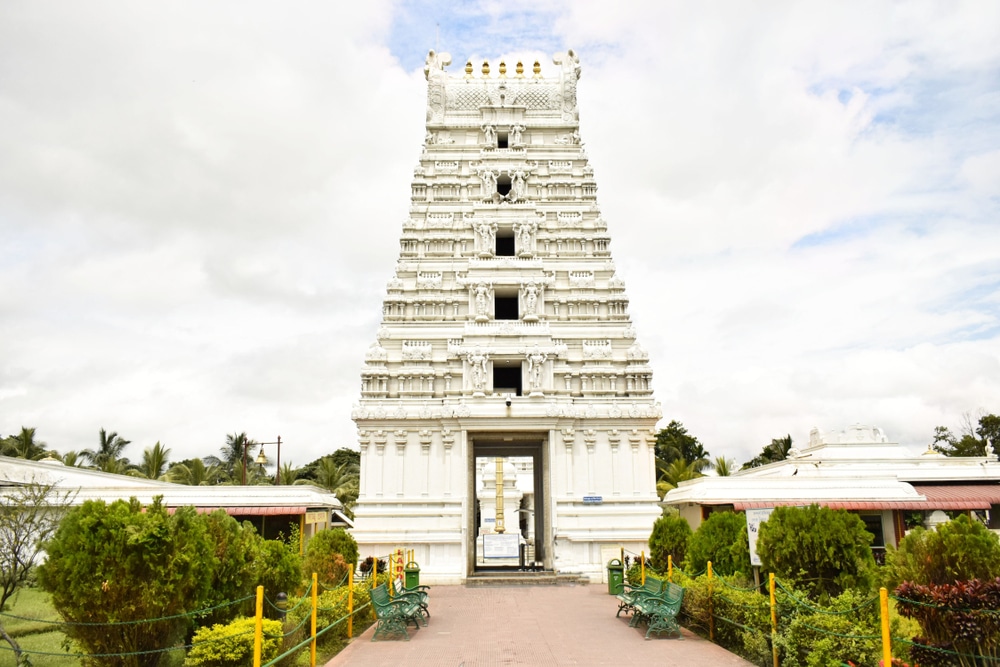Guwahati, the largest city in the state of Assam in northeastern India, gives the impression of a vibrant metropolis at first glance. Behind this modern façade, however, lies a city rich in culture, history and natural beauty. With its unique blend of ancient sanctuaries, picturesque landscapes, and bustling markets, Guwahati offers visitors an unparalleled glimpse into the soul of India’s northeast.
Special features of Guwahati
Guwahati has a long and rich history, dating back to the 4th century. As the spiritual center of the region, it was once the capital of the ancient Kamarupa Kingdom and is now the heart of Assam’s cultural and economic life. Here, tradition and modernity merge harmoniously, and the local population is proud to share their cultural treasures and traditions with visitors.
The city is picturesquely located on the southern bank of the Brahmaputra, one of the longest rivers in Asia, and is framed by the foothills of the Himalayan mountains. This stunning natural setting gives Guwahati a special atmosphere that captivates every visitor.
Sights

a) Kamakhya Temple: The Kamakhya Temple is one of Guwahati’s most recognizable landmarks and an important religious center for Hindus. This ancient temple, dedicated to the goddess Kamakhya, is located on Nilachal Hill and attracts thousands of pilgrims every year. The sanctuary houses an impressive number of sculptures and offers a fascinating insight into the religious culture of the region.
b) Assam State Museum: For history buffs, the Assam State Museum is an absolute must-see. It offers an extensive collection of artifacts documenting Assam’s rich history, from prehistoric times to the present day. Here, visitors can admire a variety of exhibits, including sculptures, coins, manuscripts, and traditional textiles.
c) Umananda Temple: Located on picturesque Peacock Island in Brahmaputra, Umananda Temple is another gem of the city. The temple dedicated to Lord Shiva is an idyllic place of peace and contemplation, shielded from the hustle and bustle of city life.
d) Pobitora Wildlife Sanctuary: Just 50 km from Guwahati is the Pobitora Wildlife Sanctuary, a true paradise for nature lovers. The sanctuary is home to an impressive biodiversity, including the rare Indian rhinoceros, various species of deer, wild buffalo and a variety of bird species. With guided safaris, Pobitora offers an unforgettable opportunity to observe these majestic animals in their natural habitat.
e) Nehru Park: The centrally located Nehru Park is one of the oldest and most famous parks in the city. With its expansive lawns, manicured gardens and shady trees, the park offers the perfect backdrop for a relaxing picnic or a relaxing reading break.
f) Basistha Ashram Temple and Nature Reserve: Located on the southeastern outskirts of Guwahati, the Basistha Ashram Temple and Nature Reserve is another place to get away from the hustle and bustle of everyday life. The reserve covers an area of about 70 hectares and is crisscrossed by lush forests and rushing streams. Here you can not only enjoy nature, but also visit the temple of the same name, which is dedicated to the sage Basistha.
Guwahati’s climate: monsoon rains and mild winters
Guwahati has a subtropical monsoon climate characterized by hot summers, mild winters and abundant rainfall. Temperatures vary throughout the year from an average of 10 °C in the winter months to 32 °C in midsummer. The months of April to September are the monsoon season, when the city is hit by heavy rainfall. The annual rainfall is around 1800 mm, with the majority falling during the monsoon months.
Despite the high temperatures and humidity during the summer months, the climate in Guwahati is generally pleasant, especially during the cooler months from October to March. During this time, mild temperatures and drier weather invite you to explore the numerous sights and natural beauties of the city and its surroundings. Travelers who want to fully enjoy Guwahati’s subtropical climate should plan their visit accordingly and be prepared for the changing weather conditions.
Tips
a) Best time to visit: The ideal time to visit Guwahati is between October and March, when temperatures are pleasant and the monsoon rains have subsided.
b) Culinary delights: Assamese cuisine is characterized by its unique taste and variety. Don’t miss out on local specialties such as khar, a delicate mix of raw papaya and lentils, or tenga, a spicy and sour fish dish. The many restaurants and street stalls in Guwahati offer an excellent opportunity to experience these exquisite flavors.
c) Transportation: Guwahati has a well-developed transportation network that includes taxis, buses, and auto-rickshaws. To explore the city and its surroundings comfortably, it is recommended to hire a taxi or auto-rickshaw. However, you should make sure to negotiate the prices in advance to avoid misunderstandings.
d) Respectful behavior: It is important to be aware of the cultural norms and religious customs of the region and to act respectfully. This is especially true when visiting temples and other religious sites, where appropriate clothing and behavior are expected. Find out about the respective customs in advance to avoid unpleasant situations.
Guwahati is undoubtedly a fascinating destination that reflects the soul of India in a unique way. With its rich culture, breathtaking nature and hospitable people, the city offers countless opportunities to discover the charms of the Orient and make unforgettable memories. It’s time to explore the hidden treasures of Assam and be enchanted by the magic of Guwahati.


